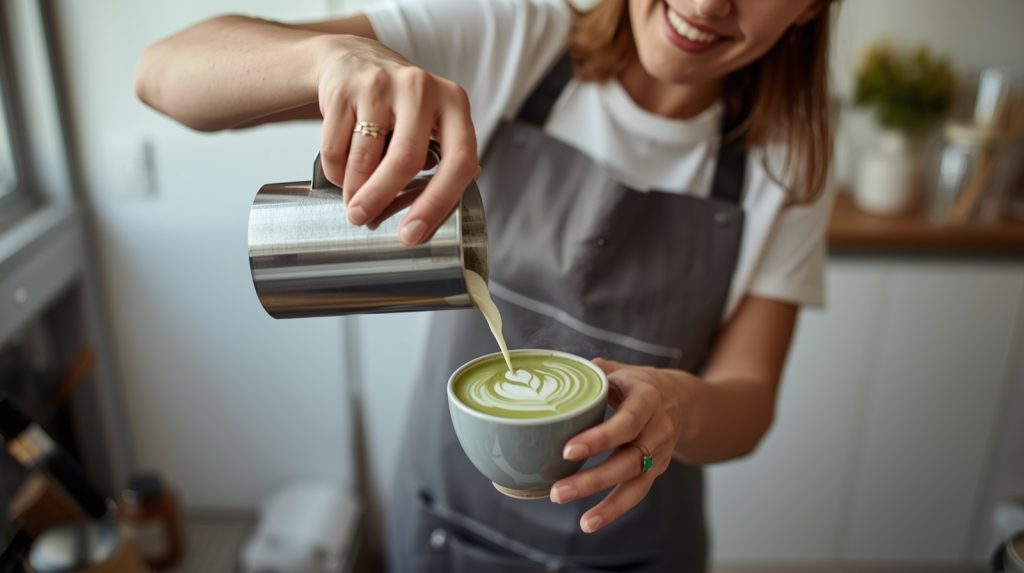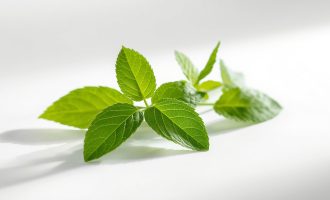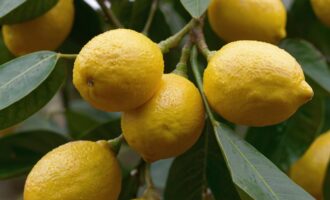Matcha is not just a trendy drink from social media — it’s an ancient Japanese tea that has gained worldwide popularity thanks to its unique properties. If you want to replace your morning coffee with something gentler on the stomach but equally energizing, try matcha with milk. This drink is not only delicious but also incredibly good for your health.
What Is Matcha
Matcha is a powdered green tea made from young Tencha leaves grown in the shade. Unlike regular tea, you consume the entire tea leaf in powdered form, so your body absorbs more antioxidants, vitamins, and amino acids. One cup of matcha contains as many antioxidants as ten cups of regular green tea.
Why You Should Try Matcha with Milk
- Smooth taste. Milk softens matcha’s natural bitterness and gives it a creamy texture.
- No caffeine crash. Matcha contains L-theanine, which reduces stress and provides a smooth, long-lasting energy boost without the jitters or sudden drops typical of coffee.
- Good for skin and metabolism. Antioxidants and chlorophyll help detoxify the body and maintain healthy skin tone.
- Perfect for vegans. Matcha pairs beautifully with plant-based milk such as oat, coconut, or almond.
How to Brew Matcha with Milk
Ingredients:
- 1 teaspoon matcha powder (about 2 grams);
- 50 ml hot water (around 80°C / 175°F);
- 150 ml warm milk (dairy or plant-based);
- optional — honey, syrup, or natural sweetener.

Preparation:
- Sift the matcha powder through a fine sieve to prevent lumps.
- Add a small amount of hot water and whisk until a smooth foam forms.
- Pour in the warm milk and gently stir.
- Optionally, top with milk foam or sprinkle a pinch of matcha on top for decoration.
Matcha Latte vs Coffee: Which Is Better?
| Indicator | Matcha Latte | Coffee |
|---|---|---|
| Caffeine | 25–35 mg per serving | 80–100 mg per serving |
| Energy Duration | Gradual, long-lasting (up to 4 hours) | Sharp rise and quick drop |
| Effect on Stomach | Gentle, non-irritating | May cause acidity or discomfort |
| Antioxidants | Very high (EGCG, catechins) | Moderate level |
| Taste | Green, earthy, creamy | Bitter, strong |
When to Drink Matcha with Milk
- In the morning — as a coffee alternative to wake up gently and stay energized.
- During the day — as a light, refreshing drink.
- Before workouts — improves endurance and focus.
Who Should Avoid Matcha
- Pregnant or breastfeeding women (due to caffeine content);
- People with high blood pressure or anxiety;
- Those sensitive to caffeine.
Matcha with milk is a perfect coffee alternative that combines energy, wellness, and aesthetic pleasure. This drink has become a symbol of mindful living and healthy nutrition. The key is to choose high-quality matcha powder and never pour boiling water on it — that way, you’ll preserve its full flavor and health benefits.
Frequently Asked Questions about Matcha with Milk
Can I drink matcha every day?
Yes, 1–2 servings per day are perfectly fine. Just avoid exceeding your daily caffeine limit and don’t drink it after 4 p.m.
What kind of milk is best for matcha?
Dairy milk is perfect for a classic latte, while oat or almond milk works best for a vegan version — the flavor becomes smoother and lighter.
Can I add sugar to matcha?
Yes, but it’s better to use honey, agave syrup, or stevia instead of refined sugar to keep the drink healthy.
How is matcha different from regular green tea?
Matcha contains 10 times more antioxidants and is fully absorbed by the body since you consume the whole tea leaf in powdered form.
Can I drink matcha with cold milk?
Absolutely! Use cold milk and ice to make a refreshing iced matcha latte — a perfect summer drink.







